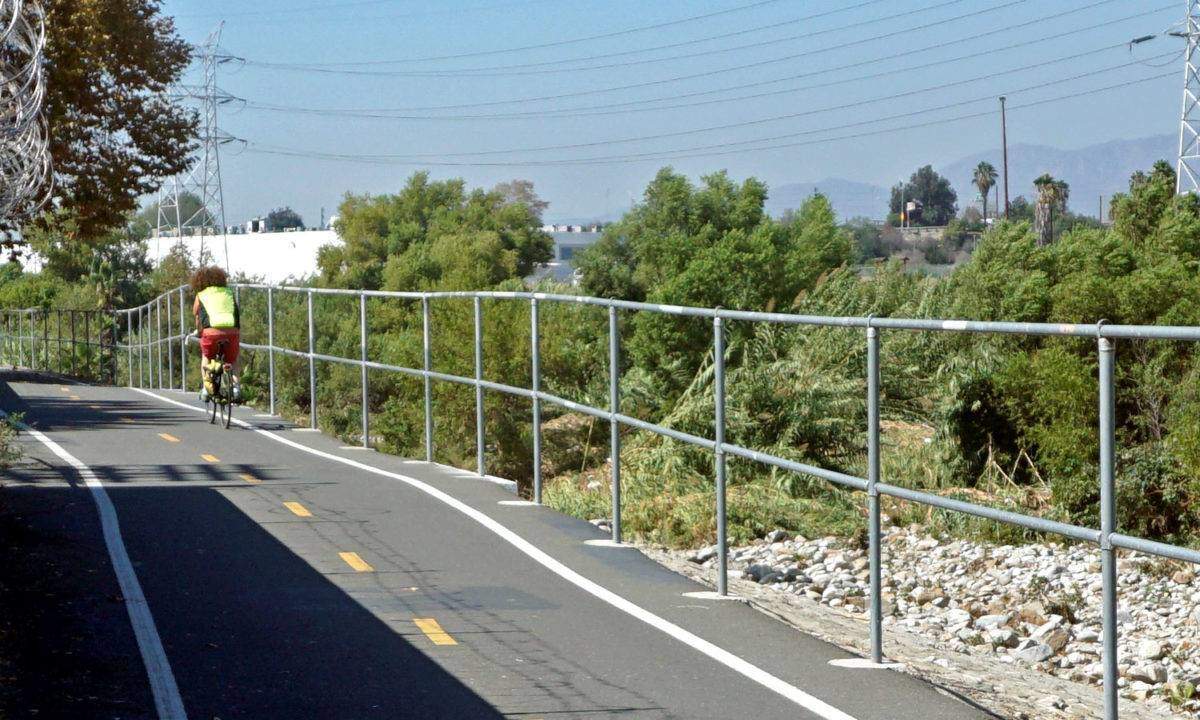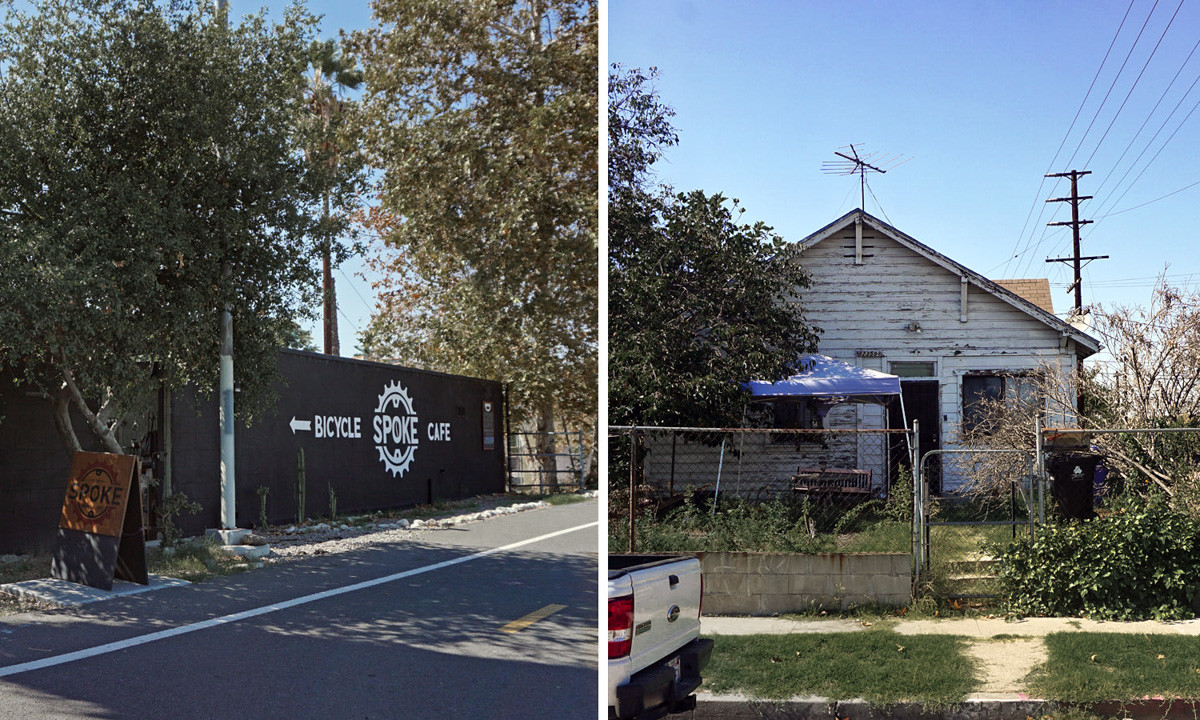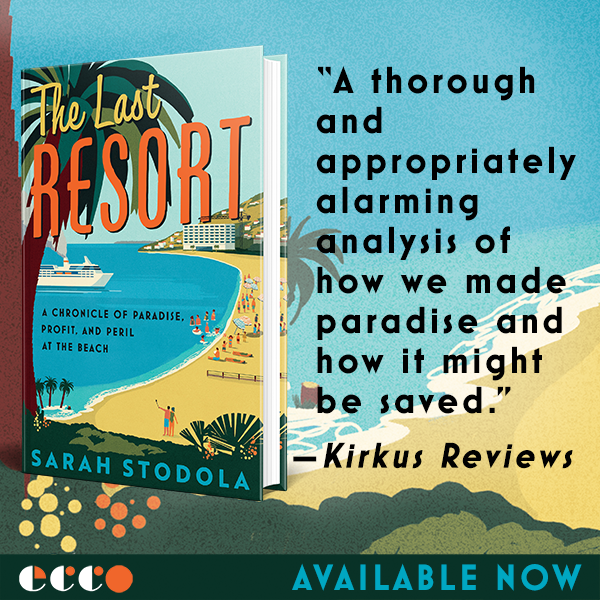The Spoke Bicycle Cafe sits on the last lot of the last block of a dead-end Los Angeles street. It can be remarkably sunny here, in a way that makes your eyes hurt. The street stops at a chain-link fence, bringing what little traffic exists here to an abrupt halt. Street parking is generally not a problem. The day of my visit, in fact, I was the only customer to arrive via car. Most of Spoke’s customers arrive instead by bike, and they enter through a different door, one that opens onto the LA River Bike Path, on the other side of the chain-link fence. The bike path runs for eight miles along the Los Angeles River. Eventually, if plans are realized, it will run for 51 miles, along a completely re-imagined and reinvigorated river. As far as I know, Spoke is the first business to sprout up specifically in service of bike path traffic.
As the project evolves, this neighborhood, Elysian Valley—colloquially known as Frogtown—will be transformed. Frogtown for now is one in an endless list of those neighborhoods existing in Los Angeles that, while locate-able on a map, hasn’t ever registered on a collective radar. You’ve seen neighborhoods like this in the movies, always representing a character with vaguely depressing fortunes and steeped in the sadness of anonymity, neither striking enough nor decrepit enough to draw attention, just like the neighborhood. Such neighborhoods are usually pleasant places in real life, full of interesting inconsistencies and mélanges. Despite its proximity to Silver Lake and Echo Park, areas currently favored by the hipster set, as yet no one has moved in on the mixed ordinariness that endures in Frogtown. Real estate developers, in anticipation of a renewed and fashionable LA River, are now trying in earnest.



Currently, though, there is only Spoke. The café is an outdoor affair, taking advantage of a large courtyard that may have once served as a shipping and receiving area, or as a place to park company machinery. The small building in back houses bike rental and repair, while the one in front contains a modest thrift shop and restroom. Spoke serves a rotating selection of beans from local roasters and plans to soon start serving beer, wine and food. For now, it strikes me as one of those places that is enormous by default, having opened up in a locale where real estate is cheap. I asked the barista if there was anything else nearby that I should check out. She said not really. Just the river, but I’d have to walk a bit to see any water.
In the early days of Los Angeles, it was the city’s primary source of freshwater, but most people recently have known the LA River merely as the setting for the car-race scene in Grease, or the semi-truck/scooter chase scene in Terminator 2: Judgment Day. In 2013, though, after several years of percolating interest, it was reclassified as a “navigable waterway” from a “flood control channel.” That same year, a nonprofit group called the Los Angeles River Revitalization Corporation announced its plan to create the 51-mile bike path and greenway along the river, and the U.S. Army Corps of Engineers endorsed a $453 million plan to revitalize the river. The budget has since grown to $1.4 billion, in a joint effort between the city and federal governments. Last month, the news leaked that starchitect Frank Gehry had signed on to lead the river’s redevelopment, bringing a new level of visibility, and a seemingly unstoppable momentum, to the project. New York City’s High Line gets mentioned often in the same breath as the LA River.



It was its imminent transformation that led me to visit Frogtown. I wanted to see what a neighborhood looks like in that strange period after the winds of change have reached it, but before they’ve manifested much of anything. I lived in Williamsburg, Brooklyn from 2000-2003, a time when its inevitable conversion into the bastion of shallow culture you see there today was considered a foregone conclusion, but when nonetheless it still appeared to the pedestrian wandering it just like it always had, empty and industrial and full of unintentionally remarkable things. Critical mass came to the concept of the new Williamsburg before that concept took root in the physical markers of the neighborhood.
I’d never been to a Los Angeles neighborhood that wasn’t already gentrified, unless you count Hollywood, which I don’t. By comparison, this one felt refreshingly approving; no one looking me up and down or caring about me one way or the other. When you’re in LA, do you find yourself doubletaking every face you pass on the street to make sure it’s not a famous one? In Frogtown, you lose that habit. There were no hipsters, nor did I see that 21st century LA type, the Lululemoned woman perpetually carrying some kind of healthy drink in her non-driving hand. Upon first glance, the population seemed mostly Hispanic, sporadically white, and of indeterminate prosperity. The day I was there, I was the only tourist.



Frogtown’s current architecture is conducive to the kind of neighborhood that people would leave Silver Lake for; industrial buildings line the river—some already house hands-on design or architecture firms; all sit primed to become restaurants or music venues or artisanal shops or artist studios—while bungalow homes fill the outer blocks. The bungalows parade a notable variation in upkeep. Some are pristine, with perfect cactus-y California landscaping, while others hide their peeling paint in plain sight behind chain-link fences. There’s no shortage of “Beware of Dog” signs, although I never did see a dog I wouldn’t try to pet. The general mishmash has an unassertive charm. I bet the people who live here like it.
Online, I’ve seen commenters complain that Frogtown is unfit for gentrification thanks to its proximity to Interstate 5. As a visitor to LA, these grumblings have an odd ring to them—it’s hard for me to imagine any neighborhood in LA that doesn’t border one freeway or another. I’d driven on two of them to get here from Santa Monica, where I was staying, and as I turned off of them and into Frogtown, I de-tensed palpably along its lightly trafficked streets. And at any rate, the freeways haven’t deterred developers and their continued plays for property in Frogtown this year.
Recently, Frogtown struck back, passing an ordinance that would, if approved by the City Council, limit all new structures on the streets near the river to two stories. This would include the location of Spoke, where I ordered an iced coffee and headed out the door onto the bike path. I crossed it, then descended the concrete bank of the river. Given the multiyear drought currently plaguing the area, a majority of the riverbed ran dry. I walked through some brush in search of water, but failed to find any. After climbing back up the bank, I walked along the bike path, a well maintained asphalt mini-road, as the barista suggested. This was a scorching day, well into the 90s, and still bikers whirred by periodically. All appeared to be commuters—no one had come out to the path for leisure’s sake on this particular Thursday afternoon.
After only a minute or so of walking, I saw water, which does indeed flow in this part of the river, taking a turn to the right and becoming a small series of rapids. If you squint, you see potential, just like with Frogtown itself. But a thriving river would bring something to LA that doesn’t currently exist, and furthermore return something to the city that it once had.
We already know what kind of restaurants would come to Frogtown, on the other hand, because LA already has these restaurants. We already know what the crowds would look like. We already have places to go for locally sourced ingredients, for single origin coffee beans, for brick walls painted white and vintage brass light fixtures. We already have this neighborhood, in LA and in Brooklyn and in so many smaller cities in between. It’s starting to feel like a bummer that we’re bound to have another. I bet in five years I won’t even recognize Frogtown, except that I totally will.






